By Glenn Barnett
On August 25, 1944, Larry Stevens and the rest of his Boeing B-17 Flying Fortress bomber crew completed their 35th mission over Nazi-occupied Europe. Since April 25, 1944, they had bombed targets in France, Belgium, Germany, Poland, Austria, Czechoslovakia, and Romania.
As part of the Eighth Air Force, they had flown from bases in England, Russia, and Italy. They bombed submarine pens, airfields, V-1 and V-2 rocket factories, dropped supplies to French Resistance fighters, and flew over Normandy on D-Day. Stevens was just 20 years old when his war ended.
Joining the Air Force
Like most Americans, Larry Stevens’s war started on December 7, 1941. He was then a sophomore at Alhambra High School in southern California. He did his bit as an air-raid warden—admonishing his neighbors to turn their lights out in case of air raids. On the night of February 23, 1942, a Japanese submarine shelled an oil terminal on the coast near Santa Barbara. In Los Angeles, air raid sirens and searchlights pierced the night sky and Stevens ran from door to door to ensure that the lights were off.
In April 1943, Stevens, now a high school senior, joined two friends in enlisting in the U.S. Army. They were given a month to put their affairs in order and used the time to arrange with their teachers to let them graduate early.
On May 10, Stevens boarded a bus for a staging area near San Bernardino, where the recruits were given uniforms, inoculations, and an IQ test. Then they were asked what branch of the Army they were most interested in. Stevens had taken photography classes in school, so he elected the air force; perhaps he could become an aerial reconnaissance photographer.
[text_ad]
He soon found himself on a train to Atlantic City, New Jersey, home of the Army Air Forces Training Command (AAFTC), where new personnel received basic training and were introduced to such subjects as indoctrination into the air force, pilot and aircrew training, and technical training.
The AAFTC lacked enough barracks for the thousands of new recruits, so many were housed in the Claridge and other hotels on the famous boardwalk. But it was no vacation. Stevens remembers that his NCO was from the South and a man of few words, about 20 of them, “all curse words that he used to put a sentence together.”
Six days a week the new men hiked some 13 miles through the streets of the city, singing Air Corps songs. Their destination was a city dump where they practiced close-order drill and marksmanship.
Tailgunner in a B-17
When Stevens was asked if he wanted to be an airplane gunner, he jumped at the chance, but that evening, August 18, 1943, he saw the headlines in the paper: “Sixty B-17’s lost over Schweinfurt and Regensburg.” Then he wasn’t so sure, but it was too late to change his mind.
He was soon on a train again, this time heading west for armament school at Lowry Army Air Force Base in Denver, Colorado. There he learned, among other things, aerial gunnery and how to field strip and reassemble a .50-caliber machine gun while blindfolded and wearing gloves. He also practiced aircraft recognition.
From Lowry the new gunners were sent to gunnery school in Fort Meyers, Florida. In addition to more training, the troops shot skeet twice a day. It was pleasant duty but was punctuated by sadness when Stevens received a letter from his mother informing him that his older brother Ernie had been killed in action at Messina, Sicily.
In December 1943, Stevens joined his 10-man B-17 bomber crew. He was assigned to be the tail gunner and he took to it right away. Everyone else was close enough to other crewmen for conversation—at least over the interphone; the noise from the engines blotted out normal conversation. The tail gunner was all alone.
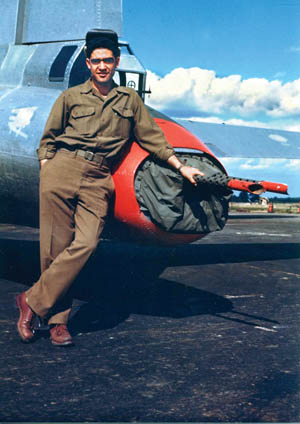
He would rest on his knees and sit on a bicycle seat that could take part of his weight. He had a good view of the sky behind the plane, but there were a few blind spots. At altitude he would breathe from an oxygen mask and wear a fleece-lined full body suit that was heated with wires connected to the plane’s electrical system. His parachute was always close at hand.
The crew practiced flying in a B-17, cross training in each other’s jobs (Stevens also learned to operate the radio), and the important work of getting to know each other. On March 31, 1944, the crew boarded the liner Queen Elizabeth in her wartime gray livery and sailed for England along a zigzag course to elude U-boats. Among the other military passengers on board was world heavyweight boxing champion Joe Lewis. Although technically in the Army, Lewis was in the Special Services division and put on boxing exhibitions to entertain the troops and raise money for charities.
RAF Horham
After docking in Scotland, the flyboys took a train to their airfield near the tiny (population 50) rural village of Horham, England, about 80 miles northeast of London, to become a part of the Eighth Air Force. RAF Horham was the home of the 13th Combat Bombardment Wing, 95th Bombardment Group, 3rd Bomb Division. RAF Horham’s U.S. Air Force designation was Station 119; about 3,000 Americans were based there.
Upon entering their headquarters quonset hut for the first time, Larry and the other men noticed 40 wallets on the counter of the orderly room. When they inquired about the wallets, they were told, “You’re their replacements. We lost four crews yesterday. Welcome to the real world.”
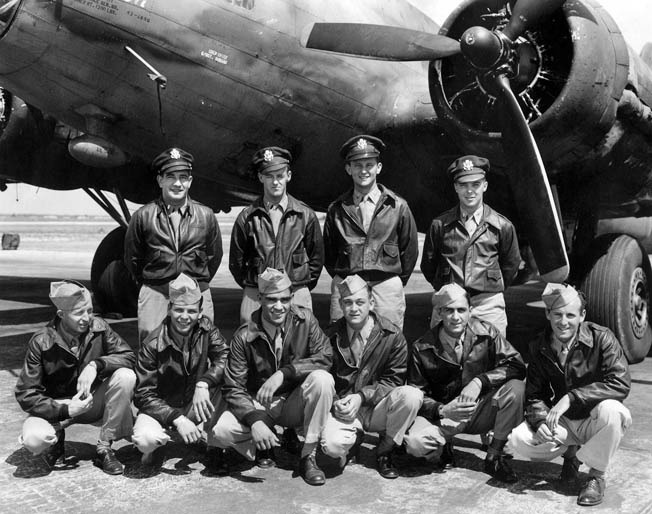
After this sober greeting, the men settled in. The hut was Spartan. It had room for two enlisted crews of six men each; the officers bunked elsewhere. There was a pot-bellied iron stove in the center of the room for heat and for boiling water to make tea. Each bunk was topped by a straw mattress covered with canvas. There were no sheets or pillowcases, just scratchy Army-issued wool blankets.
Larry and the other new men soon learned that the Eighth Air Force was spread across 45 different bomber airfields in Britain and divided into three bomb divisions. The 1st and 3rd Bomb Divisions flew B-17s, while the 2nd Division flew the Consolidated B-24 Liberator. Each division contained 15 groups, and each group had four squadrons of seven to 12 planes each. Five or six of these were available for flying at any one time. Three squadrons could put 20 planes in the air at a time. Sixty planes became a “wing.” The fourth squadron stood down for maintenance.
After a few days at RAF Horham, the new crews were scheduled to take a familiarization flight around the country. They were to use an old B-17F called Patches because it had been patched up so often following previous missions. As the new men assembled by the runway, they heard a loud explosion in the thick clouds above. As they watched, the broken sections of two B-17s, having collided in the thick clouds above, crashed in front of them; 15 men were lost. The familiarization flight was cancelled.
Full House Over France
On April 25, 1944, Stevens flew his first combat mission—over Dijon, France. The crew was awakened at 1:45 am, went to the latrine, had breakfast, and assembled in the smoke-filled briefing room where a blanket covered a large map of Europe.
The blanket was removed, and the men were shown their primary target along with secondary targets and the routes they would take. The revelation of the day’s target was always met with groans and gripes. After the briefing, the gunners collected their .50-caliber machine guns from armament, where they had been cleaned and oiled. They were then driven to their planes, and the guns were mounted before takeoff. This was the routine for every mission.
Because there were so many airfields in Great Britain at the time and because the skies were almost always cloudy, each plane flew in a tight spiral over its own airfield to gain altitude and reach clear skies above. Then they would seek out the other planes in their group (each group had unique tail marking for identification) and join the wing in formation while heading for the target.
Stevens’s plane flew tail’s ass Charlie—the last plane in the “wing.” There was light flak, but no enemy fighters appeared. The first mission to Dijon was a success; that mission logged eight hours and 45 minutes in the air. On landing, the men were given a shot of scotch and went through a thorough debriefing—what kind of flak and enemy fighters were encountered, what were the weather conditions like, any mechanical problems to the target and back, etc. Stevens told his interviewer that he had seen a lone, unmarked B-17 in the distance at their same course and speed. He then learned that the Germans often flew captured B-17s to radio to the ground the altitude and speed of the bombing formations to alert their gunners below and fighters above.
On April 26, their second mission, they bombed Brunswick, Germany. This time, Stevens and his grew were mated with a B-17G with the serial number on the tail of 297797. The last five numbers gave the plane its name: Full House. The nose art featured a hand of cards with three sevens and two nines. Larry and his crew would fly 29 of their 35 missions in this plane.
Larry’s crew flew its third mission on April 27 against Cherbourg, France, in Full House, below and behind the rest of the wing. As they neared their target, Stevens, from his vantage point in the tail, saw four flak bursts behind them. Each burst was at their altitude, and each burst came closer to the plane. This was followed by a second burst of four shells, each successively closer yet.
As calmly as he could, Stevens notified his co-pilot, “Do something or they’re going to get us.” It got worse. George Dancisin, the pilot, increased speed to avoid the flak but that put them directly below the rest of the group which had by now opened their bomb bay doors and would soon release their bombs right on top of Full House.
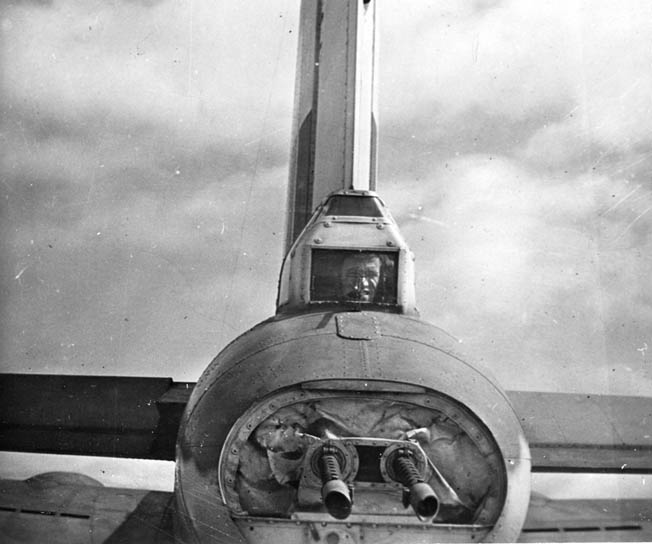
To avoid being blown out of the sky by friendly bombs, Dancisin suddenly cut power and swerved sharply out of the bomb run. As he did so, flak exploded where they would have been, riddling the bottom of their plane with steel splinters. Full House made for home, dumping her bombs in the English Channel.
When Full House arrived back at Horsham, the crew was informed that they would fly their fourth mission the same day. The plane was rearmed and refueled to bomb Le Culot, France. The crew logged 11 hours and 45 minutes in the air that day. Everyone was exhausted.
“The Sky Belonged to Us”
On the 11th mission, they joined 1,000 other bombers and as many fighters to bomb synthetic oil plants; Full House was assigned to hit a plant in Brux, Czechoslovakia. Stevens, from his tail position, saw yellow, black, and white parachutes that “completely filled the sky behind me.” The Germans put up a stiff resistance, and the parachutes were both German and American.
Stevens recalled that he fired at a variety of fighters—yellow-nosed Messerschmitt Me-109s of the elite Hermann Göring squadron and Focke-Wulf FW-190s—while Full House took flak that knocked out its communications wiring. Fortunately, the flak shells were set to explode at a higher altitude and passed right through the plane.
The next day Stars and Stripes reported that 40 American bombers and 10 fighters were lost on the mission and many more were damaged. Assuming no one survived, that would make for 410 men killed on one mission.
On D-Day, June 6, 1944, the crew of Full House flew its 16th mission––against targets inland behind the invasion beaches to support the troops on the ground. There was not much to see of the invasion because of the thick cloud cover, but occasionally Stevens spotted a few ships below through a break in the clouds. As it was, its target was socked in, and the crew aborted its mission. There were absolutely no enemy fighters in the air. “The sky belonged to us,” Stevens remembered.
The next day Full House returned to bomb a bridge at Nantes, in western France, to prevent German reinforcements from reaching the Normandy invasion beaches. The weather was better over Normandy on June 7, and the crew could see the vast armada of ships and the landing beaches, but at 20,000 feet the men were too high to make out any details.
Scotch and Eggs
On June 19, while Full House was undergoing maintenance, Stevens and his crew took advantage of a day pass to London. While they were in the city, German V-1 buzz bombs, each armed with nearly a ton of Amatol-39, began to fall. Along with the rest of the population, the American fliers ducked in and out of air raid shelters frequently. “We knew what it was like to be on the receiving end” of a bombing, Stevens related.
Stevens celebrated his 20th birthday on July 10 with a bottle of scotch that his crewmates pooled their money to buy him. Of course he passed it around, so they all shared in the celebration.
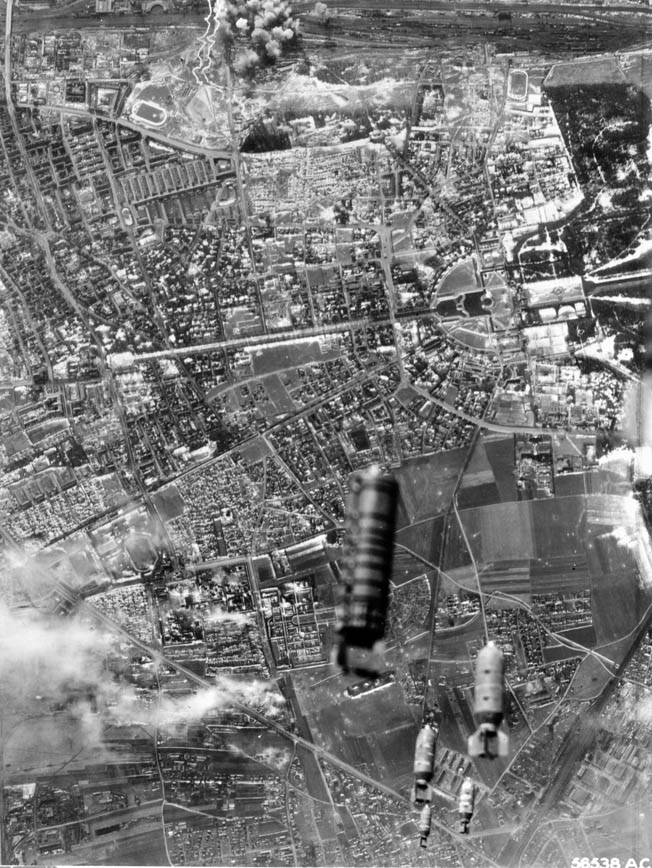
The next day the crew of Full House flew its 24th mission against V-1 factories in faraway Munich, Germany. Flak was heavy. Stevens watched as a neighboring B-17 took a direct flak hit that knocked out an engine. The waist gunner of that plane, a friend of Stevens, was hit in the shoulder by a fragment that penetrated his flak vest. He was seriously wounded and sent home.
Even with their busy flight schedule, there was still time for mischief. One day while Full House was grounded for maintenance work, Stevens and a friend went for a long hike in the English countryside. They came across a farmer’s hen house and helped themselves to four eggs. The fresh eggs were a welcome contrast to the powdered eggs they had been eating since arriving in Britain.
2,281 Containers For the French Resistance
As the war progressed, new technology was brought into use to increase accuracy and bomb damage. The 25th mission of the Full House crew, on July 12, was against a Focke-Wulf assembly plant at Munich. On the way home, the co-pilot, Albert Keeler, affectionately nicknamed “Ruby” after the actress, tuned the ship’s radio to a station that broadcast German propaganda in English and played it over the interphone. The announcer made a big deal about how the Americans were dropping “dud” bombs on Munich. What the cocky announcer didn’t know was that the crew of Full House dropped bombs with delayed-action fuses that would explode later.
Another technology that came online was pathfinder radar-guided bombing; the target no longer needed to be visible to the eye. The lead aircraft was fitted with electronics that could “see” through the clouds to drop its bombs on target. Each following plane released bombs around the leader’s drop.
For its 29th mission, the Full House crew had something to do besides drop bombs. Full House joined 191 other B-17s assigned to drop supplies to the French Resistance, the Maquis. The drop zones lay west of Geneva, Switzerland, in Savoie in the Alps. In all, 2,281 containers were dropped.
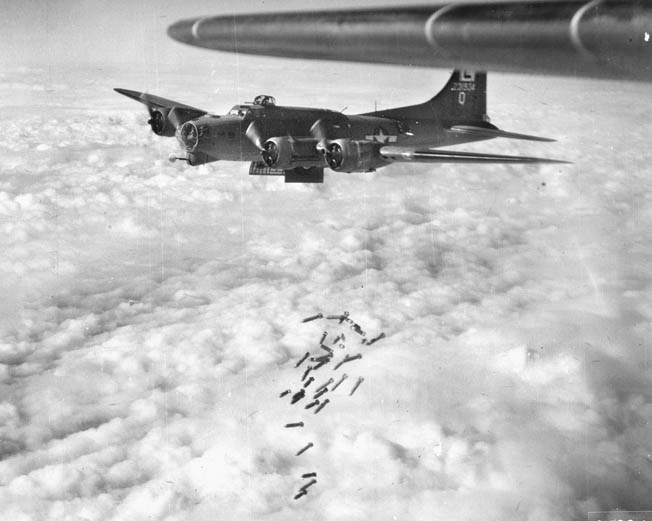
Flying at 500 feet, Stevens recalled, “We flew in formation with our landing gear and flaps down to lower our air speed.” As the parachutes exited the plane, Stevens could see figures on the ground rushing to receive them. There were no enemy fighters or flak. Time in the air was nine hours and 20 minutes. There was disconcerting news when they landed, however. The mandatory number of missions was raised from 30 to 35.
It should also be noted that, as the war progressed, the number of missions required for a U.S. Eighth Air Force air crewman to complete before becoming eligible for rotation off combat flying duty changed several times. In August 1942, the number was 30 sorties and 200 hours—and was once briefly raised to 50 missions—but in December 1942 it was dropped to 25 sorties and 150 hours “if circumstances warranted.”
The criteria continued to change periodically until the fall of 1944, when the Mighty Eighth deleted all references to number of sorties or flying hours in relation to rotation; personnel were rotated when they were “fatigued to a degree that affected the efficiency of their unit.” The increase in the required number of missions or hours always led to a decrease in morale. The Eighth soon established a policy of 35 missions.
Operation Frantic
On August 6, Full House began another unusual mission. The crew would be a part of Operation Frantic that ran from June to September 1944. This was a plan to allow long-range American bombers to bomb targets in the far eastern part of German-held territory and land in the Soviet Union. From there they would refuel, rearm, and hit targets on a return “shuttle” flight to Italy.
Frantic was plagued with problems from the beginning. Uncooperative Soviet allies made it a logistical nightmare. Supplies from bombs to bullets had to be shipped in through the Baltic and sent by train to airfields in what is now Ukraine. Soviet airfields were often little more than rutted dirt or mud, and PSP (pierced steel planking) had to be imported and laid on top of the runways to support heavy bombers.
After a few bombing runs in June 1944, the Germans caught on. On the night of June 21, a flight of 75 Luftwaffe bombers found 73 undefended B-17s and their North American P-51 Mustang fighter escorts on the ground at Poltava, Ukraine. For two hours the Luftwaffe leisurely bombed the airfield at Poltava, destroying 47 B-17s while damaging most of the others. In addition, 14 P-51s were damaged and much of the fuel and bomb stores on the ground went up in flames.
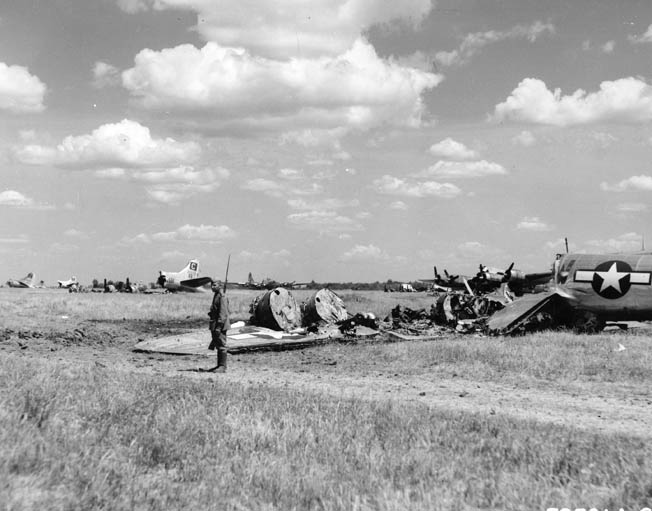
The Soviets would not allow the Americans to defend themselves. Officially no explanation was ever given, but the flyers suspected that the Soviets feared they would look bad in American propaganda if they could not defend their guests. This only added to the mistrust between allies.
Full House would take part in the fifth of these shuttle missions to Poltava. They were part of a wing of 75 B-17s escorted by 154 P-51s. Outbound from England, the wing bombed a German airfield at Gdynia—a part of the “Polish Corridor.” Focke-Wulf 190s made a diving pass at Full House, but the P-51s chased them away.
As Full House circled the airfield at Poltava, her crew could see the dozens of wrecked B-17s strewn all over the airfield. It was a sobering sight as no one aboard knew of the June 21 tragedy, which was still classified. “It scared the be-jesus out of me,” remembered Stevens.
The Americans were not allowed to leave the base, but that did not stop their hosts from making them very welcome. They were served a hearty meal by friendly farm girls and treated to an after-dinner concert of Russian folk music and dancing. But sleep was problematic. There were still patches of snow all around, and the clear Ukrainian night was freezing cold; each man had only one inadequate blanket on his cot. Even after an exhausting 10-hour flight, it was difficult to sleep because of the bitter cold.
Fire Aboard Full House
The next day, at Soviet request, Full House joined 54 other B-17s and 29 P-51s for an attack on an oil refinery at Trzebinia, Poland. After their bomb run, Stevens could see black smoke rising to 23,000 feet—a sure sign that they had done their job.
The crew had a real scare on the way back from Trzebinia. Flying at 10,000 feet, Stevens took off his oxygen mask and began to relax when suddenly he heard the pilot yell to the co-pilot, “Grab it, Ruby, grab it!” At the same moment Full House veered out of formation and started to dive. From his position in the rear of the plane, Stevens saw two parachutes float past. He turned and looked forward through the fuselage to see smoke filling the plane. Somewhere there was a fire. Grabbing his parachute, he crawled forward to find one of the waist gunners frantically trying to wave the smoke out of one of the side gun ports.
Meanwhile, the other waist gunner, Gordon Langford, grabbed a fire extinguisher and ran forward through the bomb bay without his parachute to put out the fire. The plane was righted and continued back to Poltava.
It was there that the crew discovered the cause of the mysterious fire. A design flaw in the B-17 caused the oxygen hoses to run at the base of the top turret. Constant rubbing against these hoses by the swiveling turret eventually cut through the hoses and caused an oxygen fire, which shot forward between the pilot and co-pilot and into the nose of the plane, which housed the navigator and bombardier. They instinctively bailed out, and it was their parachutes that Stevens had seen floating past him.
Fortunately, the two men who bailed out landed in Soviet-occupied territory. They would be returned to England two weeks later, where they reunited with the rest of the crew and had an amazing story to tell.
Frank Morrison, the navigator, related how trucks full of Russian soldiers drove out to meet him. He threw up his hands and said, “Amerikanski, Amerikanski.”
The first Russian on the scene laughed and said in perfect English, “I know that you are American. I graduated from Michigan and was conscripted into the Soviet Army when I returned to Russia.”
That night the Russians held a banquet and, after several friendly toasts of vodka, Morrison could no longer recall the details except that everyone had a good time.
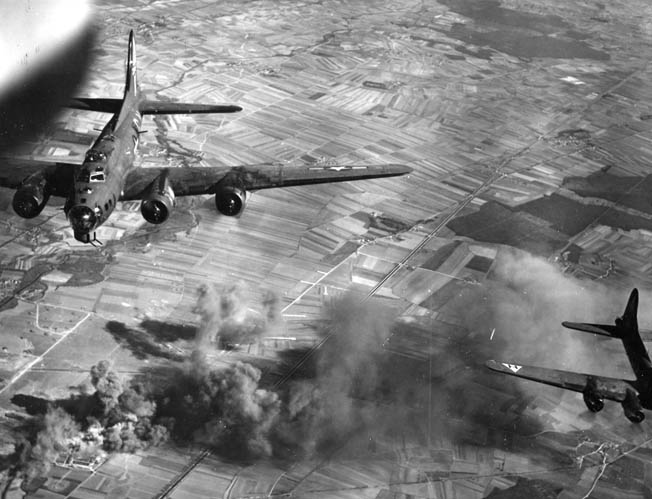
Meanwhile, the rest of the crew scavenged the extensive boneyard of wrecked B-17s at Poltava for spare parts, but the oxygen system could not be fixed until they returned to England. Full House left Poltava on August 8, 1944, for the crew’s 33rd mission—a bombing run against Buzan, Romania, a part of the Ploesti oil refinery works. Without a navigator or bombardier, the ball-turret gunner, Leo Makelky, was assigned to do both tasks while Stevens took over the ball turret.
It was relatively easy work for Makelky. He would simply follow the other B-17s, and when the lead bomber dropped his bombs. Leo would drop his. As the ground was socked in with clouds, accuracy was entirely dependent on the lead bomber and his pathfinder radar.
That night Full House landed at Foggia, Italy, on the Adriatic Sea near the heel of the Italian boot. Stevens was shocked at the total devastation around them; every building he could see had been reduced to rubble.
Stevens arrived late at his assigned bunk only to find it occupied by someone else. He decided to sleep in the plane but, as he walked in the dark, he was nearly shot by a nervous guard who had orders to shoot first and ask questions later. Fortunately, the guard disobeyed orders by challenging the “dumb” flyboy who had just arrived and didn’t know the rules. He escorted Stevens safely to his plane by shouting to the other guards and waving his flashlight so they would not be shot.
Stevens’ Last Mission
The crew’s 34th mission was to bomb the airfield at Toulouse, France, and land back in England. Someone decided that, since liquor was hard to find in Britain, he would store some in the radio operator’s compartment. As the plane reached altitude, however, the tops popped off the bottles. The radio operator calmly called to his friend Leo Makelky to join him in the radio room as he had a “problem.” By the time Full House reached England, the two of them “were pretty well snockered.”
In England the crew was given some R&R while awaiting the return of its navigator and bombardier from Russia. While the men rested, a brand new crew, just arrived in England, took Full House out on its first mission, which was over Zeitz, Germany. German flak was heavy and accurate, and Full House and her new crew were shot down.
Despite the loss of the plane that had carried them safely through 29 missions, Stevens and his crew would fly their 35th and final mission on August 25, 1944, in a brand new B-17G model, which their crew chief had already named Big Chief Illiniwek, after the mascot of the University of Illinois.
Taking off with the usual load of a dozen 500-pound bombs and 2,875 gallons of fuel, they spiraled up through the clouds until they reached clear skies at 15,000 feet. From there they and the rest of the formation headed toward the day’s target: Politz, Austria.
As the formation flew over Germany, it gained altitude to above 20,000 feet. At that altitude, the number-three engine of the new ship would not hold manifold pressure, and the plane could not keep up with the formation. They turned back toward Horham without dropping their bombs. The built-up pressure of 35 missions vented itself as Stevens spotted “enemy seagulls” and the gunners happily did a lot of shooting.
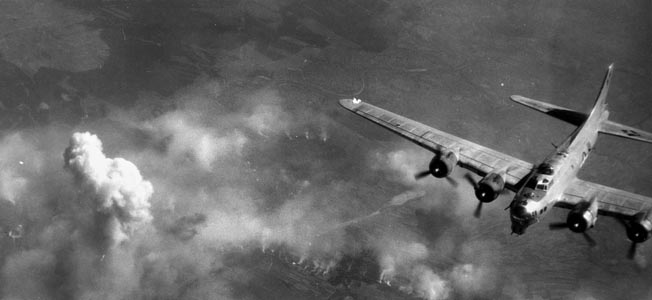
Because they had flown over enemy territory, the crew was given credit for its last mission. The men later learned that two of the bombers on the run were lost to flak. After somehow surviving 35 missions, it was time to go home.
Stevens flew home in a C-54 transport plane. When he arrived in New York, there was a cursory inspection of his luggage, and the inspector told Larry to “go home and enjoy himself.” The inspector knew from the combat ribbons on the gunner’s uniform that Stevens had flown in combat and survived. He was a war hero and deserving of a warm welcome home.
Larry Stevens was still in the Air Force, however, and he volunteered to be a tail gunner on a North American B-25 Mitchell bomber for duty in the Pacific and the invasion of Japan; the war ended while he was still training. Stevens returned home and served in the fire department of his hometown—Alhambra, California—for 31 years. He has written a book about his wartime experiences that was self-published under the title It Only Takes One. He is still in touch with Leo Makelky, the only other member of his crew still living.
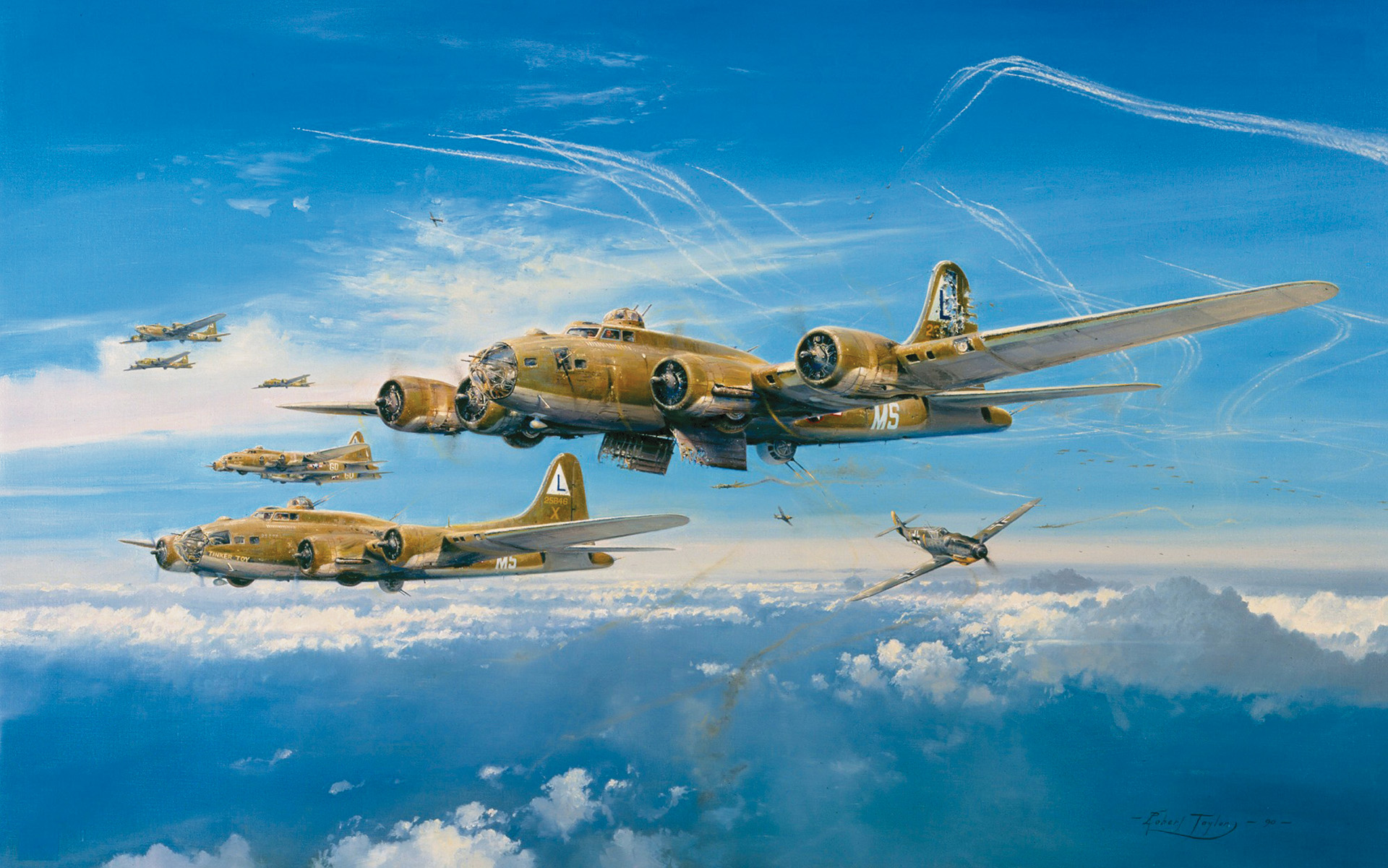
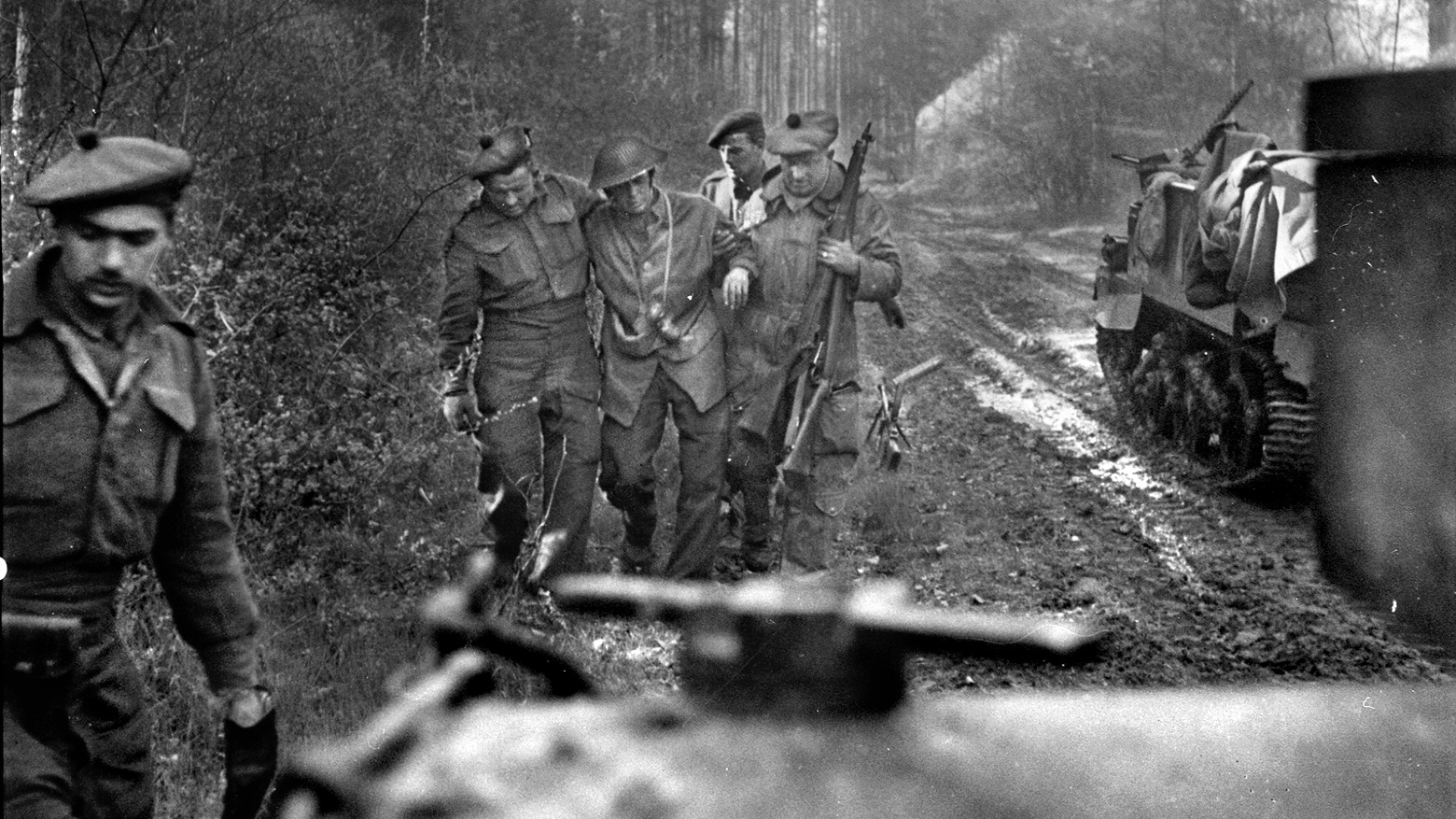
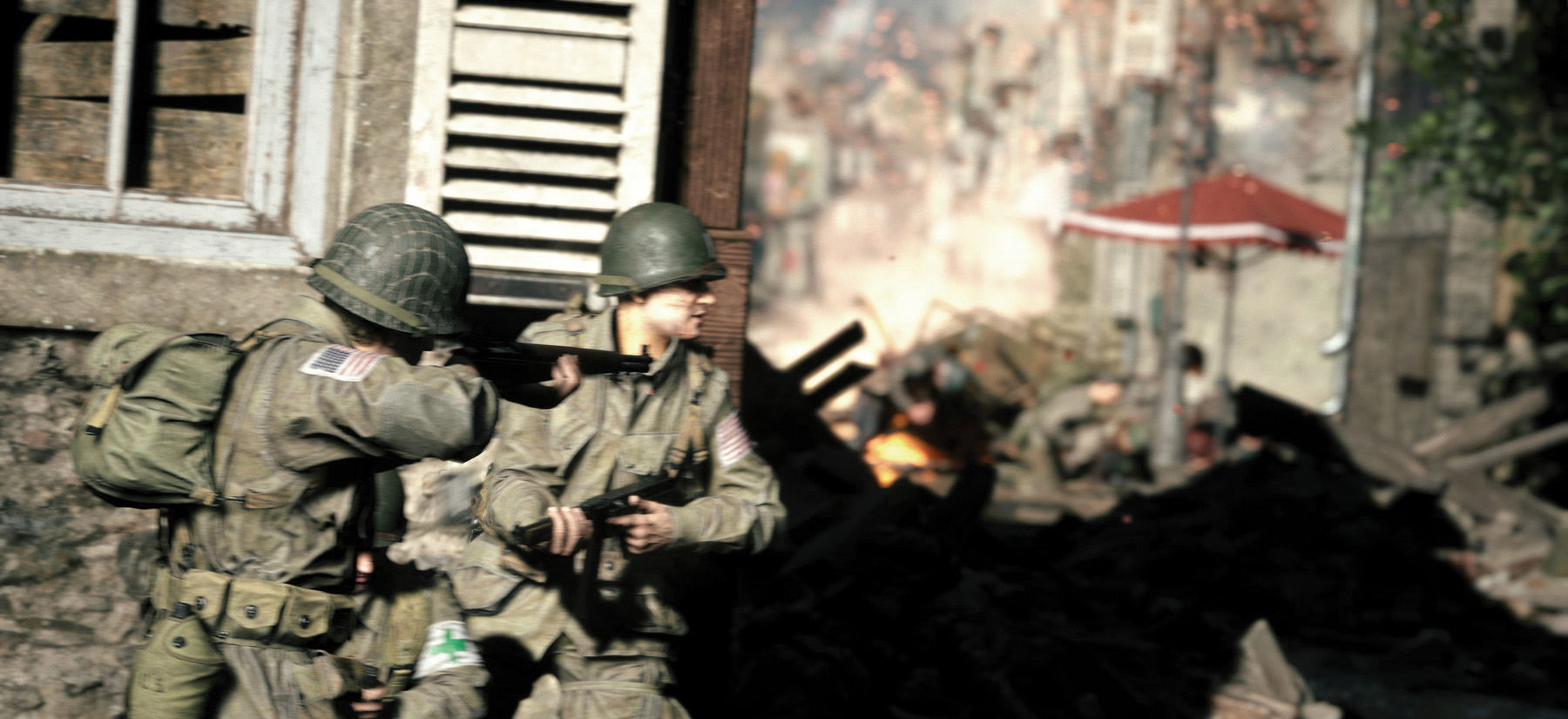
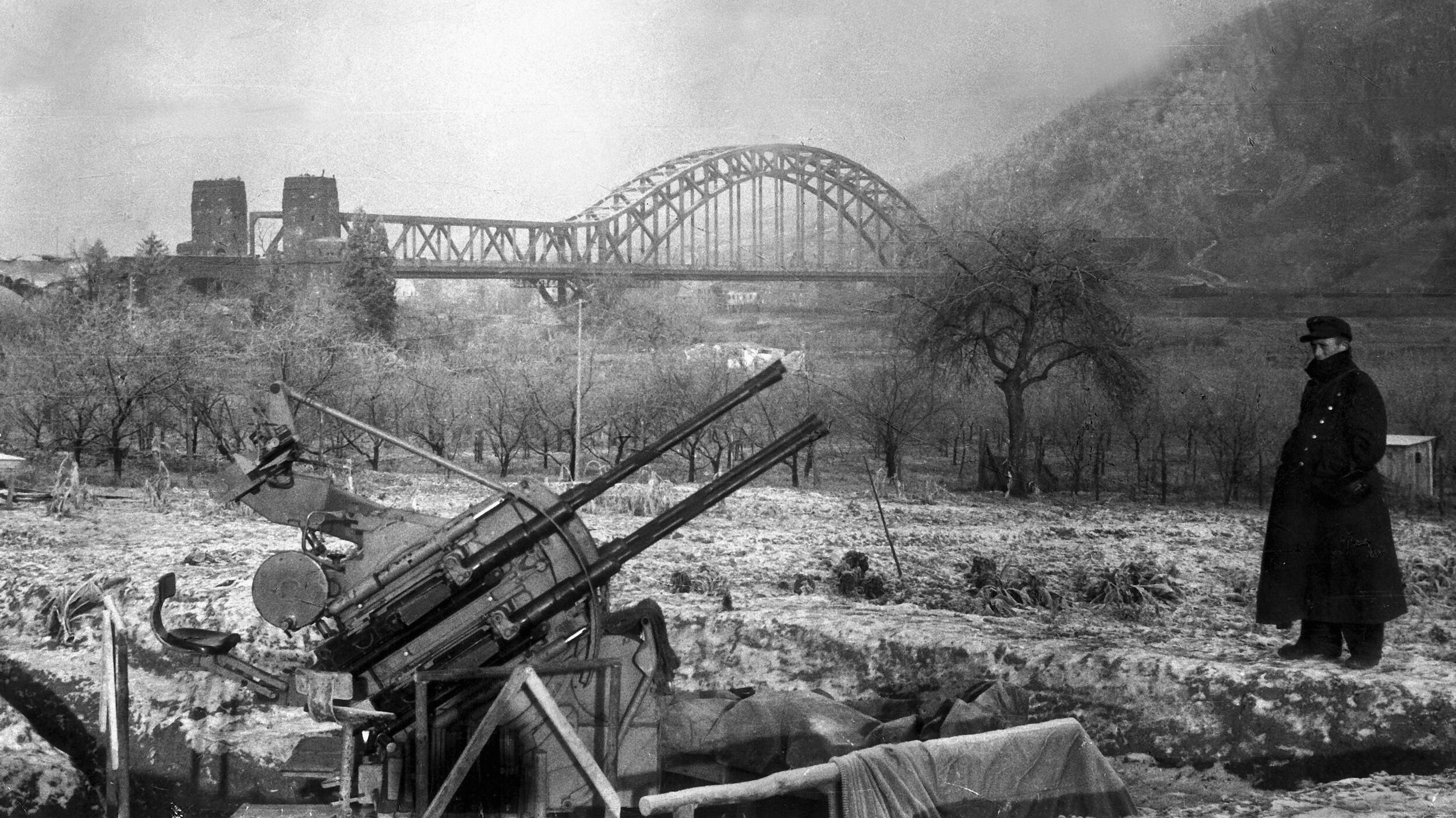
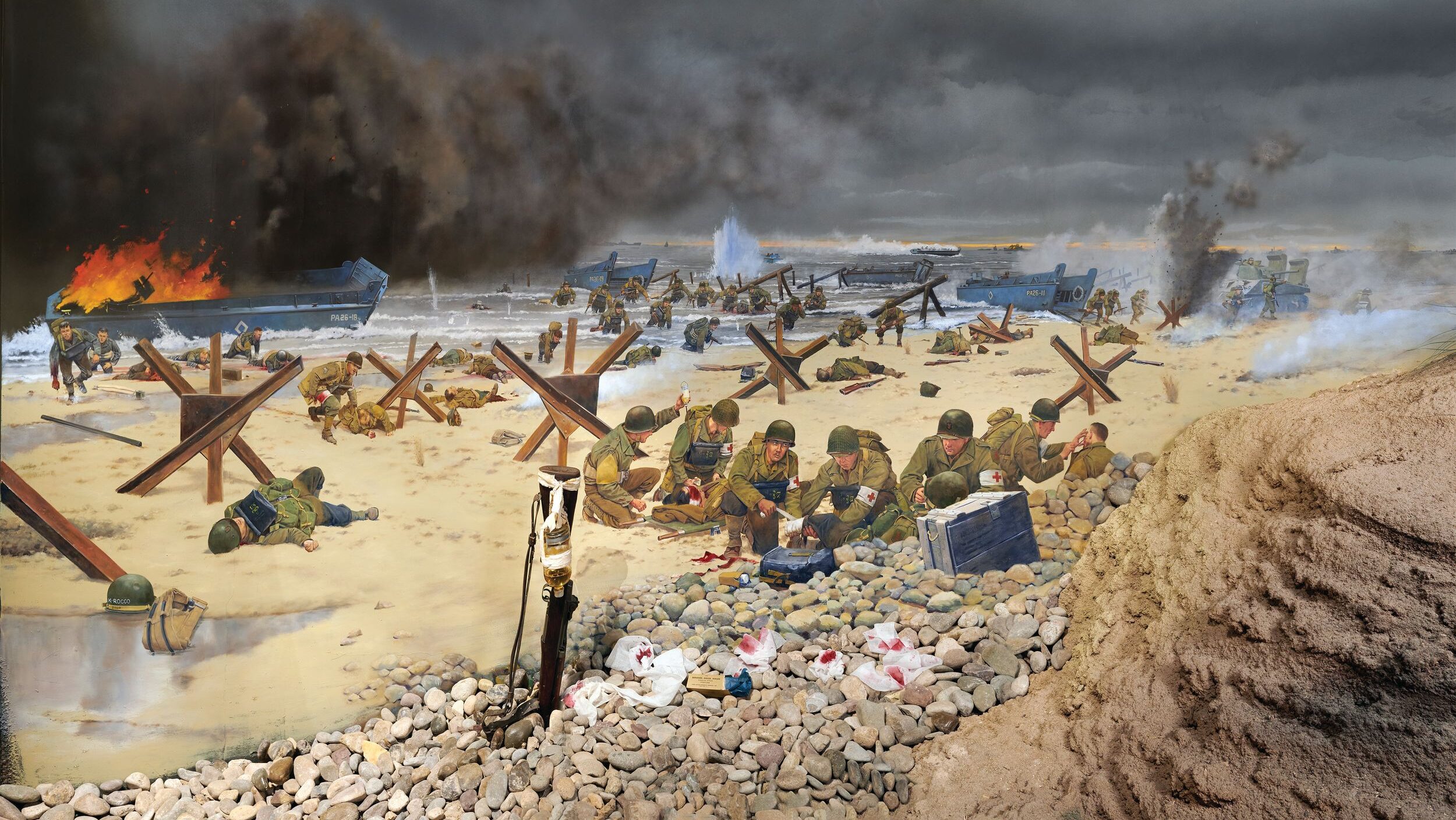
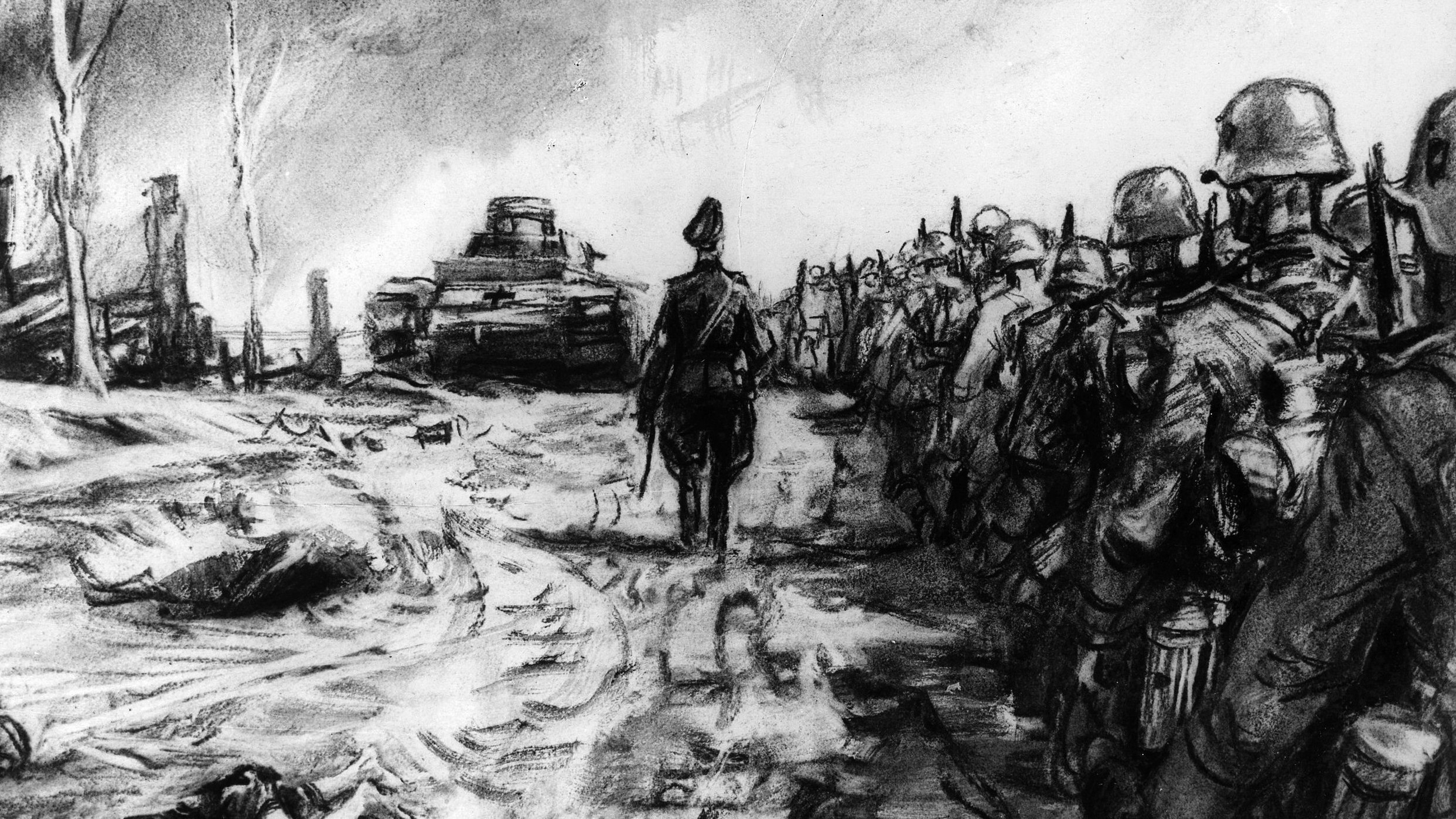
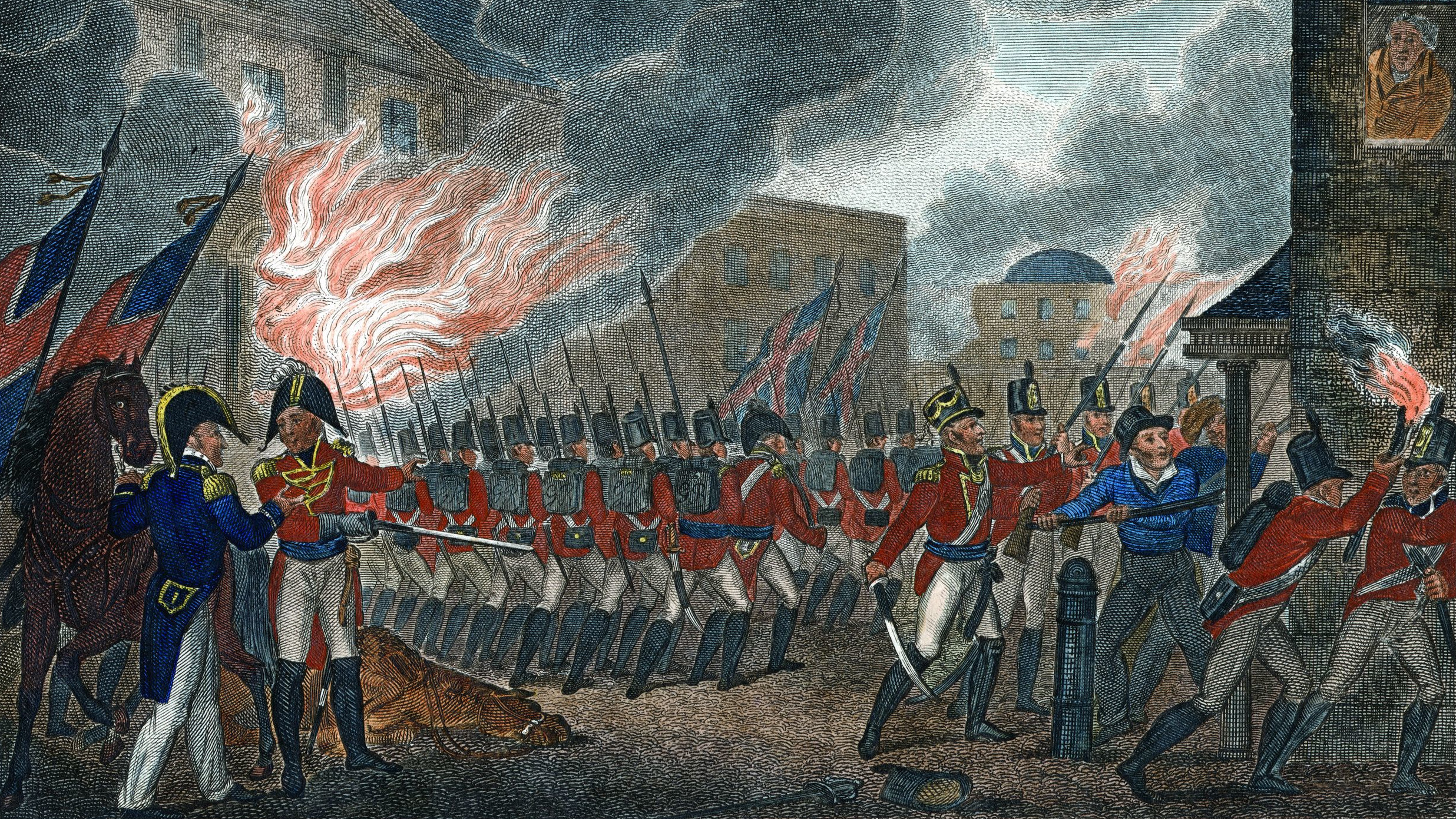
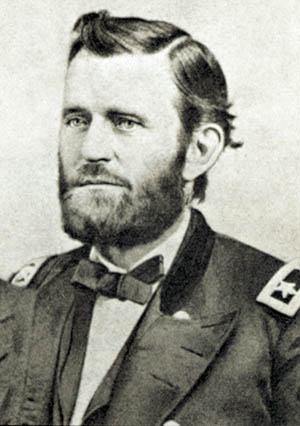
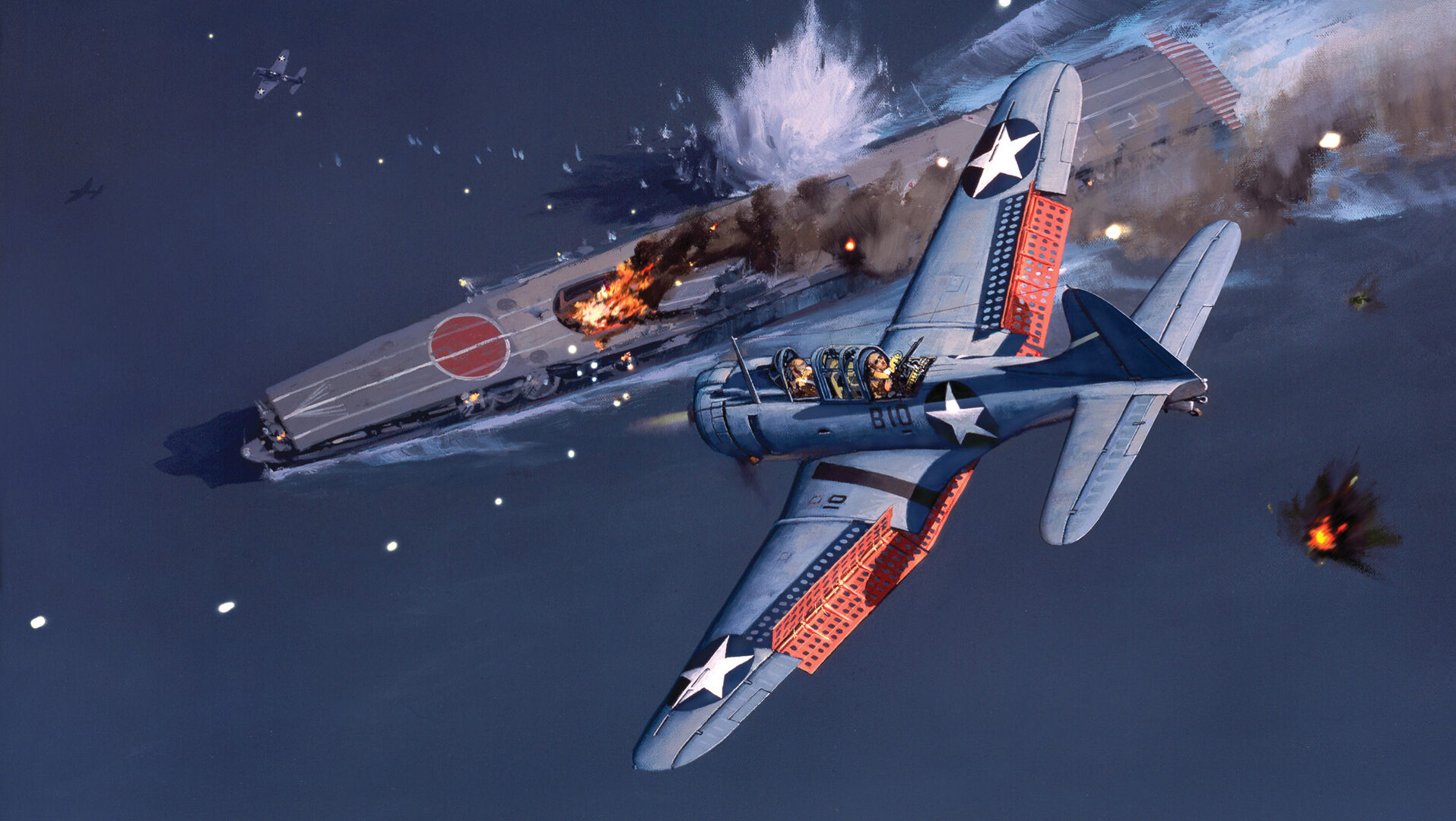
So interesting to come across this information about Larry Stevens. He was “uncle Weeper ” to me along with my aunt Henry “Henrietta” My dad and Larry were good friends. Our families spent a lot of time together in the 50-60’s until we moved to Idaho. We spent so much time with them that I thought I was a Mexican until I was old enough to know better, But we learned many family recipes and traditions that we still carry on today. Only the fondest memories Love and Respect for them all.
Isnt this article from 2019? Thx!!
Wonderful post about an ordinary American – young, brave and full of guts ! Hero status awarded to this very young man who well served his country and the USAAF. Saluted by an ex RAAF airman from Melbourne, Australia.